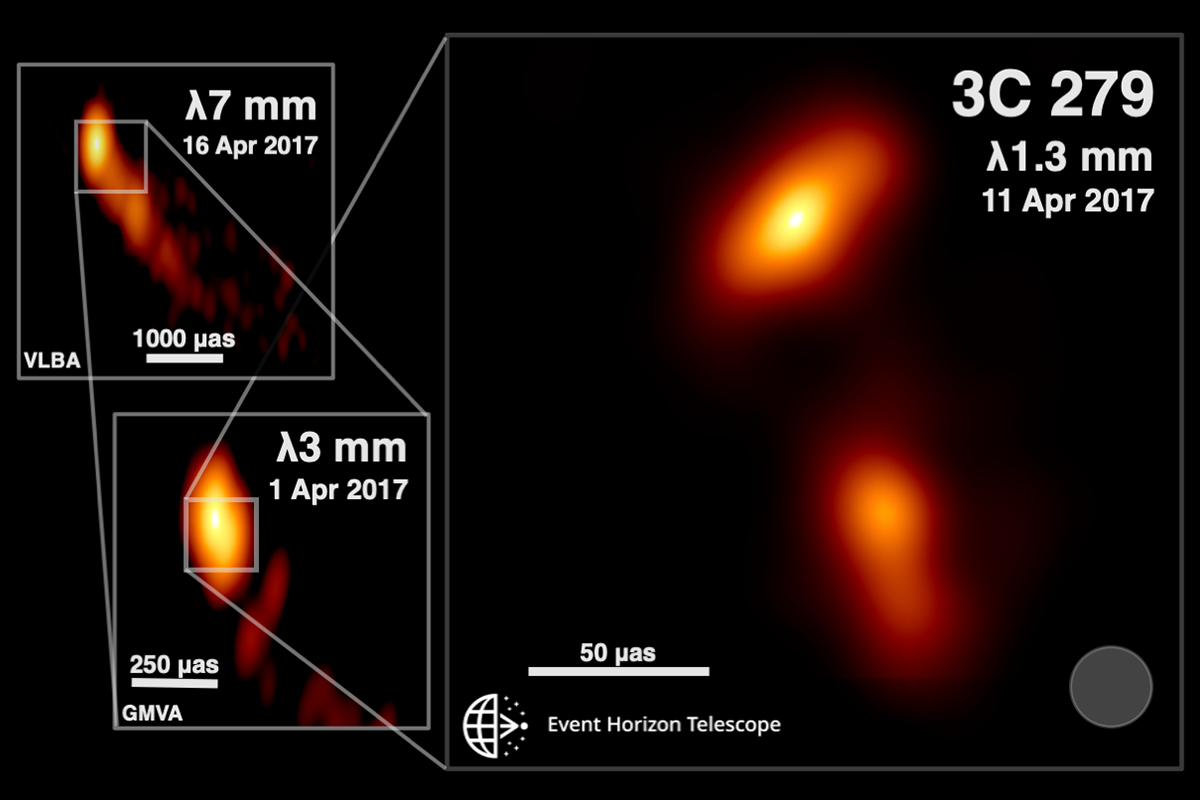

Because cosmic rays produce light via their collisions, the highest-energy gamma rays can pinpoint this location, and the new study indicates that these gamma rays are likely not produced near the event horizon – at least not in 2017. The huge jets launched from black holes, like the ones shown in today’s images, are thought to be the most likely source of the highest-energy cosmic rays, but there are many questions about the details, including the precise locations where the particles get accelerated. Their energies can be a million times higher than what can be produced in the most powerful accelerator on Earth, the Large Hadron Collider. Currently, the main hurdles for these tests are uncertainties about the material rotating around the black hole and being blasted away in jets, in particular the properties that determine the emitted light.Ī related question that is addressed by today’s study concerns the origin of energetic particles called “cosmic rays,” which continually bombard Earth from outer space. For example, scientists plan to use these data to improve tests of Einstein’s Theory of General Relativity.

The combination of data from these telescopes and current (and future) EHT observations will allow scientists to conduct important lines of investigation into some of astrophysics’ most significant and challenging fields of study. This produced ideal conditions for studying the black hole, from regions close to the event horizon out to tens of thousands of light-years. The first results show that the intensity of electromagnetic radiation produced by material around M87’s supermassive black hole was the lowest that had ever been seen. “This is a wonderful example of astronomers around the world working together in the pursuit of science.” “This incredible set of observations includes many of the world’s best telescopes,” said co-author Juan Carlos Algaba of the University of Malaya in Kuala Lumpur, Malaysia. The observations were concentrated from the end of March to the middle of April 2017

The data were collected by a team of 760 scientists and engineers from nearly 200 institutions in 32 countries or regions, using observatories funded by agencies and institutions around the globe. “There are multiple groups revving up to see if their models are a match for these rich observations, and we’re excited to see the whole community use this public data set to help us better understand the deep links between black holes and their jets,” said co-author Daryl Haggard of McGill University in Montreal, Canada. The sequence finishes by showing what gamma ray telescopes on the ground, and Fermi in space, detect from this black hole and its jet.Įach telescope delivers different information about the behavior and impact of the 6.5-billion-solar-mass black hole at the center of M87, which is located about 55 million light-years from Earth. The screen splits to show how these images, which cover the same amount of the sky at the same time, compare to one another. Next, the view changes to telescopes that detect visible light (Hubble and Swift), ultraviolet light (Swift), and X-rays (Chandra and NuSTAR). (The scale for the width of squares is given in light-years in the bottom righthand corner). It then moves through images from other radio telescope arrays from around the globe, moving outward in the field of view during each step. The sequence begins with the EHT image of the black hole in M87 released in April 2019 (the data was obtained in April 2017). The video shows data across many factors of ten in scale, both of wavelengths of light and physical size. The NASA telescopes involved in this observing campaign included the Chandra X-ray Observatory, Hubble Space Telescope, Neil Gehrels Swift Observatory, the Nuclear Spectroscopic Telescope Array (NuSTAR), and the Fermi Gamma-ray Space Telescope.īeginning with the EHT’s now-iconic image of M87, a new video takes viewers on a journey through the data from each telescope.


 0 kommentar(er)
0 kommentar(er)
